Sign up for daily news updates from CleanTechnica on email. Or follow us on Google News!
Is Global Warming Happening?
When people ask if global warming is real, I cite my NASA experience and the images from space that we used to illustrate global warming. The prime suspects were the satellite images which showed a half ice-free Arctic Ocean in the late summer of 2007, 2011, and 2012 for the first time in recorded history. (See Fig. 3)
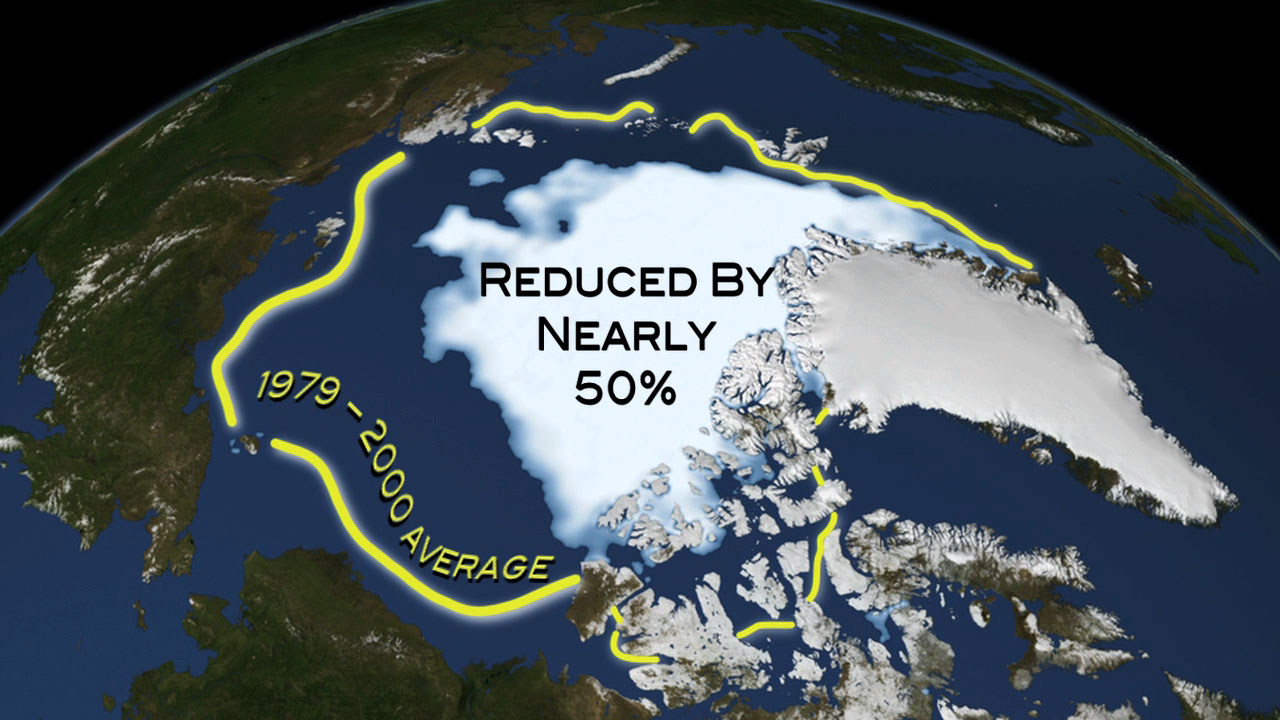
Satellite images also showed the retreat of virtually all of the mountain and tidal glaciers on our planet. In Fig. 4 we see a Goddard Scientific Visualization Studio image illustrating the retreat of the Greenland Jakobshavn Tidal Glacier from 1851 to 2010.
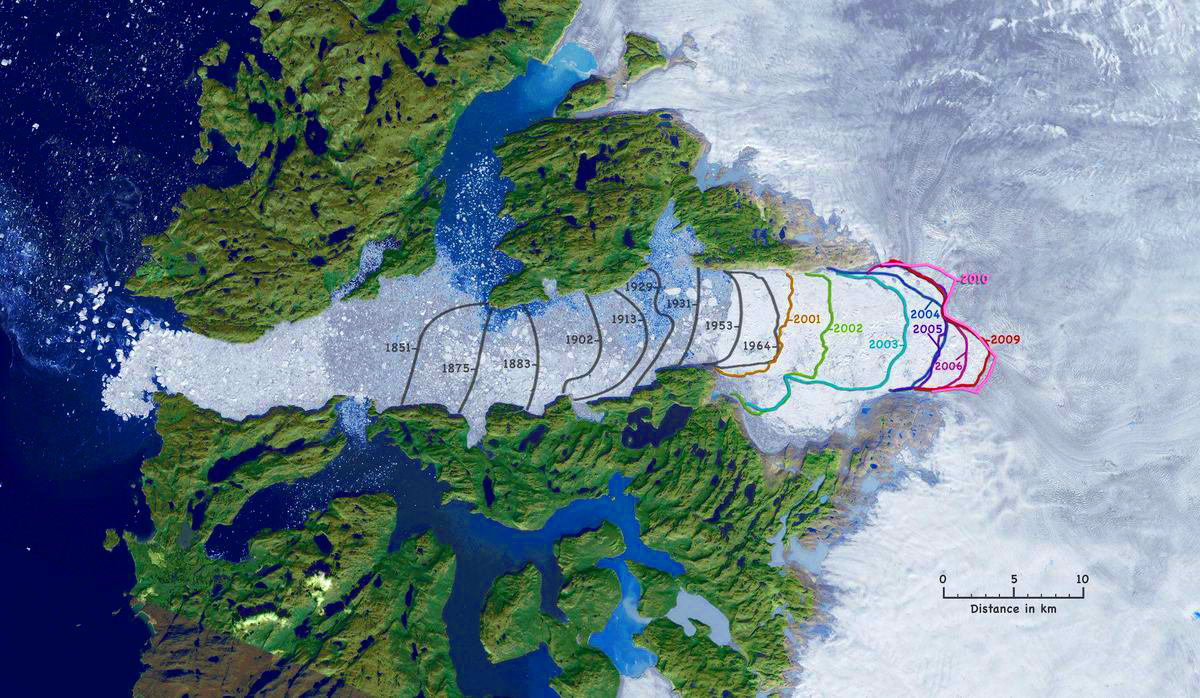
However, global warming’s deadly effects have most recently been demonstrated in spades by the spin-up of Hurricane Michael in 2018 and Hurricane Milton this year (2024) to Category 5 (winds over 165 mph) in slightly more than 24 hours due to exceptionally warm water in the Gulf of Mexico. Hurricanes derive their energy while passing over warm ocean water. Fig. 5 shows an International Space Station photo of a Cat 5 hurricane. As you can see, a Cat 5 hurricane has an extremely well-defined symmetric eye.
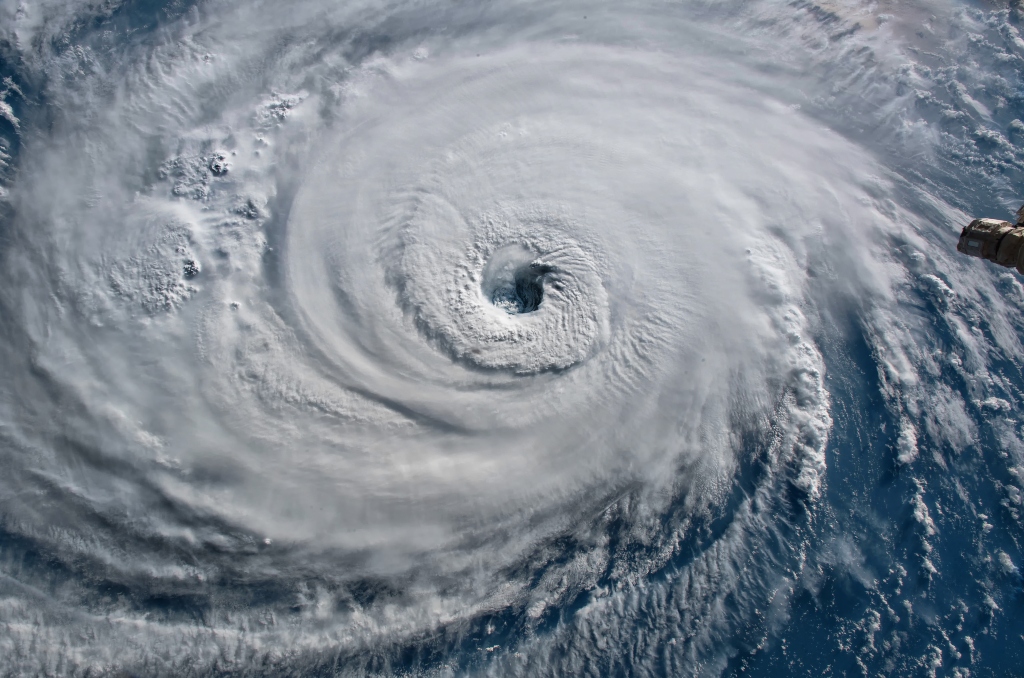
Weaker hurricanes and tropical storms look more like a loose collection of strong thunderstorms. Fig. 6 shows the incredible damage suffered by the town of Mexico Beach in the Panhandle of Florida when struck by the 160 mph winds of the Cat 5 Hurricane Michael as it made landfall.

The warming planet is also demonstrated by the additional water held by air that is only a few degrees warmer than normal and thus resulting in the devastating flooding from storms over Houston, Texas, and Asheville, North Carolina, this year (2024).
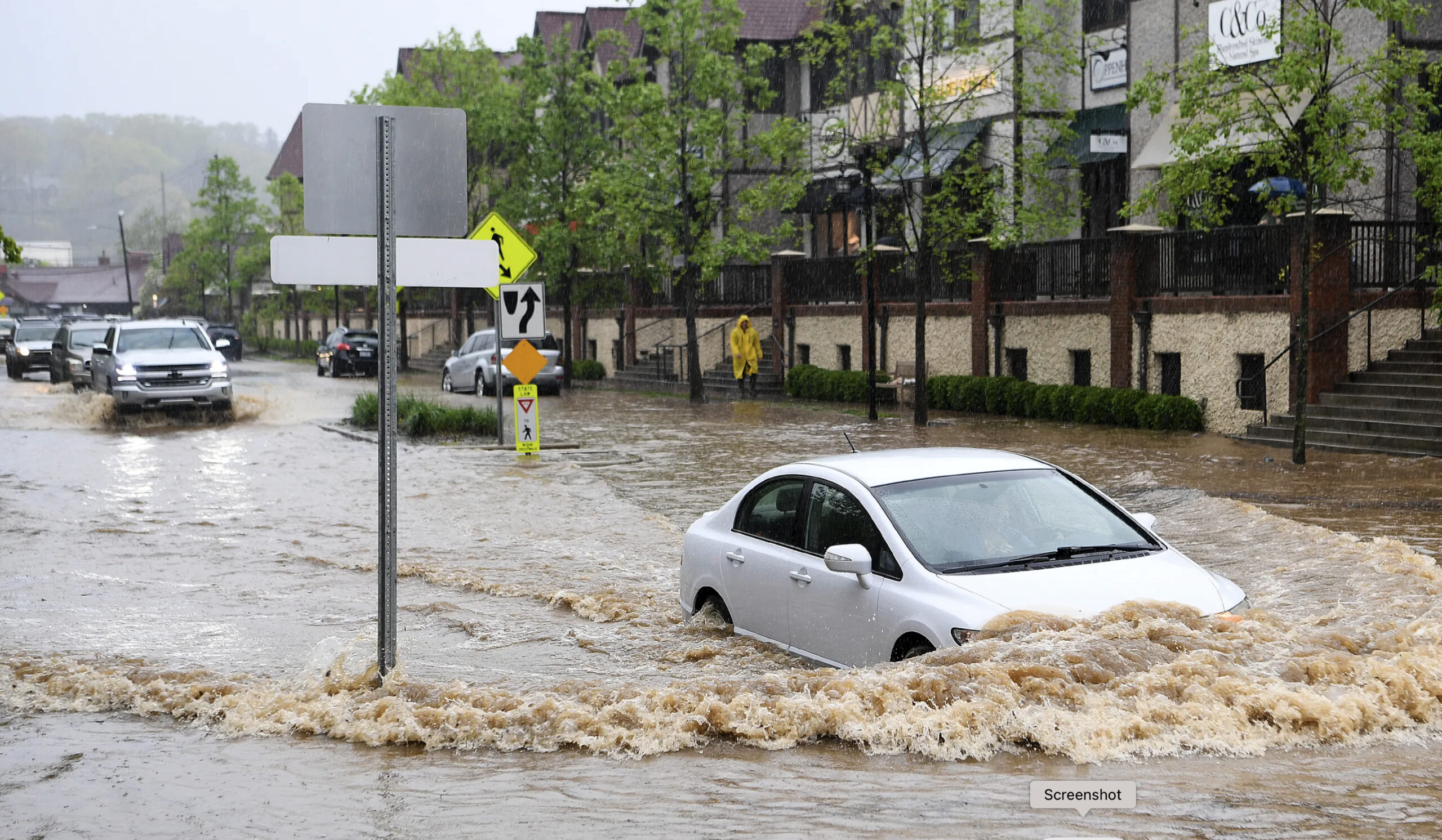
We have had all-time record temperatures both for the last 12 months and this past July. We’ve had record heat waves in the Middle East and the Southwest US. The fires last year in Hawaii and in 2018 in California have been the most destructive in over 100 years. Also, the observed melting of the polar and Greenland ice caps will raise the height of the ocean. More people will die as coastal regions are flooded. With these observations it’s getting ever more difficult to argue that our planet is not getting warmer. It’s also becoming more and more obvious that the only explanation for the cause is humans burning massive amounts of fossil fuels.
Can We Stop Global Warming?
Twenty years ago, when we talked about stopping global warming, it seemed like a pipe dream. Four clean energy technologies were discussed to achieve this goal: Hydropower, nuclear power, wind power, and solar power. However: 1) Conventional hydropower is already built out as much as we can expect in the US. 2) Nuclear power is also already built out as much as we can expect and is likely to decrease as nuclear power plants are retired. 3) Wind and solar power were ideal clean energy sources, but were not considered to be realistic alternatives to conventional coal and gas because they were too expensive. Mark Z. Jacobson of Stanford showed that it was technically feasible to totally switch to clean energy, but he expected that it would take an effort and expense equivalent to US efforts expended in World War II. While it would have been possible in theory, no one thought it would be politically possible.
What has changed in the last 20 years? The cost of wind and solar power have come down so dramatically that it is now uneconomic to continue to generate electricity from coal and gas. It’s only a question of how fast we can make it happen. Mark Z. Jacobson has written a series of articles on how it can (actually will) be done. Because of this, massive investments in clean energy are now being made in China, Europe, and the US that show promise of making substantial progress toward the goal of dramatically reducing CO2 production. Will this be enough to totally stop global warming? Probably not!
How would we now go about working toward the goal?
We would generate clean electricity using only wind, water, & solar: Hydropower, wind power, and solar power are 100% emission-free, require no fuel while operating, and are the most economical methods of electricity generation today. Massive investments in wind and solar are now being made in the US. In fact, in August 2024, 99% of new power investments in the US were in solar.
Electrify everything: Internal combustion engines are only ~30% efficient. Electric vehicles are 80% efficient, and heat pumps are 3 to 4 times more efficient than resistance heating, so power demands in an all-electric society would be substantially lower than our current oil, gas, and coal driven society
Use 90% efficient electric motors to convert electrical energy into mechanical energy instead of producing mechanical energy with gas and diesel engines.
Use 90% efficient batteries to power those motors for all ground transportation (except railroads), all short haul aircraft, all short distance ocean shipping, all industrial use, power tools, recreational use, etc.
Electrify all railroads: The drive wheels on all railroad engines are already powered by electric motors. It is only necessary to bypass the diesel engines which presently generate the electricity to power them. This would be done with overhead wires and pantographs on engines and using battery cars to bridge hard-to-electrify tunnels and bridges. This process is mostly complete in Europe and China. They don’t need the battery cars because the tunnels and bridges in Europe and China were designed and built to accommodate overhead wires. However, except for the Acela high speed passenger trains from Washington DC to Boston and major city commuter rail and subways, electrification of railroads in North America has not even begun. It will take government intervention and funding to make this happen here.
Use electric heat pumps instead of burning fossil fuels to heat and cool air and heat water in all buildings.
Electrify steel- and concrete-making. Scrap steel can be recycled using electric arc furnaces, but making steel from iron ore using electricity is problematic. Making concrete using electricity is also problematic.
See below for some takeaways on what we need to do and not do to save the planet.
Technology is a funny thing, it may move forward at only a snail’s pace or move forward as quick as lightning. It took over 100 years for battery electricity storage to improve enough beyond lead acid to provide practical power for cell phones, laptop computers, and electric vehicles. It took over 7,000 lithium-ion batteries about AA size developed for laptops and cell phones to power the first Tesla EV. The chemistry in the AA size and slightly larger cells in new Teslas may have improved, but the construction of the batteries is almost the same today. In the science fiction movie Star Wars, we see the Millennium Falcon spaceship fly off into space from dead stop. NASA has been working for over 70 years on space planes like the X-43A towards a rocket ship that would takeoff from a runway, land back at that runway, and be ready to fly again soon like a commercial airliner. The space shuttle showed that you can fly in from orbit and land on a runway, but NASA is still nowhere close to a rocket that will take off from a runway and fly into orbit. On the other hand, as a freshman in Mechanical Engineering at University of Wisconsin Madison in 1958, I was using a mechanical slide rule for calculations. At that time no one had the slightest clue about the incredible advances that were to come over the next 50 years in electronic computers, digital photography, and video. When it comes to saving our planet, we can’t rely on rapid technological advances like we have seen with computers. As for the technology we need to save planet, we should continue small investments in new technologies. However, our massive investment must be in technologies which are already proven and are economical.
Stop subsidizing fossil fuels. It makes little sense to institute a carbon tax to disincentivize burning fossil fuel when you are incentivizing their use by subsidizing them. This won’t be easy. As the world switches away from fossil fuels, the fossil fuel companies will have trillions of dollars of stranded assets. You can be sure they will do everything they can to pay off politicians to continue the subsidies.
Institute a carbon tax on all burning of fossil fuels. There is the same pushback here from fossil fuel companies.
Generate clean electricity using only wind, water, & solar. Hydropower, wind power, and solar power are 100% emission free, require no fuel while operating and are the most economical method of electricity generation. Jacobson explains why no other source of power, including nuclear, should be considered at this time. Note: Overbuild wind and solar for light wind, cloudy skies, and low sun angle situations.
Build out electrical transmission lines to move power from sources to users. HVDC lines can be used to move power from windy areas to calm areas. Across the US you will find windy and calm areas at any given time. A transcontinental HVDC “energy superhighway” could bring power from windy areas to calm areas, and solar power from the west coast across the country to the east coast, to power the early evening maximum power demand.
Build pumped hydro and battery storage to bridge solar and wind low power periods. This is the only area where current proven technology is lacking to make the jump quickly from fossil to clean fuels. At the micro-scale of individual homes, it is possible to use electrical storage like the Tesla Power Wall to save enough electricity made by solar panels during the day to get you through the night. On a grid scale, pumped hydro works great, but there is not enough anywhere at this time. Also, it takes a long time to build, and works only where there is sufficient elevation difference. Massive investments are being made in grid-scale lithium-ion batteries, which are fantastic for quick response to variation in power demand. However, they aren’t large enough to supply power for days or weeks. Novel battery technologies like using compressed air may be able to fill the gap. Another recent technology that may work for longer term storage uses iron air batteries.
Don’t build new nuclear power plants to generate electricity. They are too dangerous (leaks and proliferation), too expensive (both cost and required government insurance/subsidies), and the timelines are too long (it takes over 10 years to build a nuclear plant). Also, in the US we have yet to devise a way to store nuclear waste and it is problematic even in countries like France where they are using the best technological methods possible.
Don’t use hydrogen to power anything! Hydrogen is an energy dense fuel, but hydrogen generation is inefficient, fuel cell generation of electricity from hydrogen is complex and 80% efficient at best, plus transportation, storage, and use of hydrogen is extremely difficult. It will never be practical to use it for anything, including transoceanic aircraft and long distance shipping.
Carbon capture and sequestration is extremely difficult! It is another technology, like space planes that take off and land on runways, that will never be cost effective in the foreseeable future! Even if you can capture carbon from the air or from a power plant using a copious amount of power, permanent sequestration may be impossible. It may just leak out of the earth again. Carbon is already sequestered — it’s called coal and oil. Just leave it there. It’s much more economical to not produce CO2 in the first place. We need to make huge investments in clean wind and solar power. Only when we have reached diminishing returns from wind and solar power investments does it make sense to even think about carbon capture. However, since CO2 will linger in the atmosphere for hundreds of years, at that point we would need to think seriously about carbon capture and sequestration and geoengineering in order to stop global warming altogether.
Use biofuels made from agricultural waste to power transoceanic aircraft and long-distance shipping. Current batteries are not sufficiently energy dense enough for long distance shipping and long-range aircraft. Propeller-driven aircraft are not fast enough for transoceanic flight.
Bonus takeaway: The only place we will get safe clean inexpensive power from nuclear fusion for the next 100+ years is from the sun.
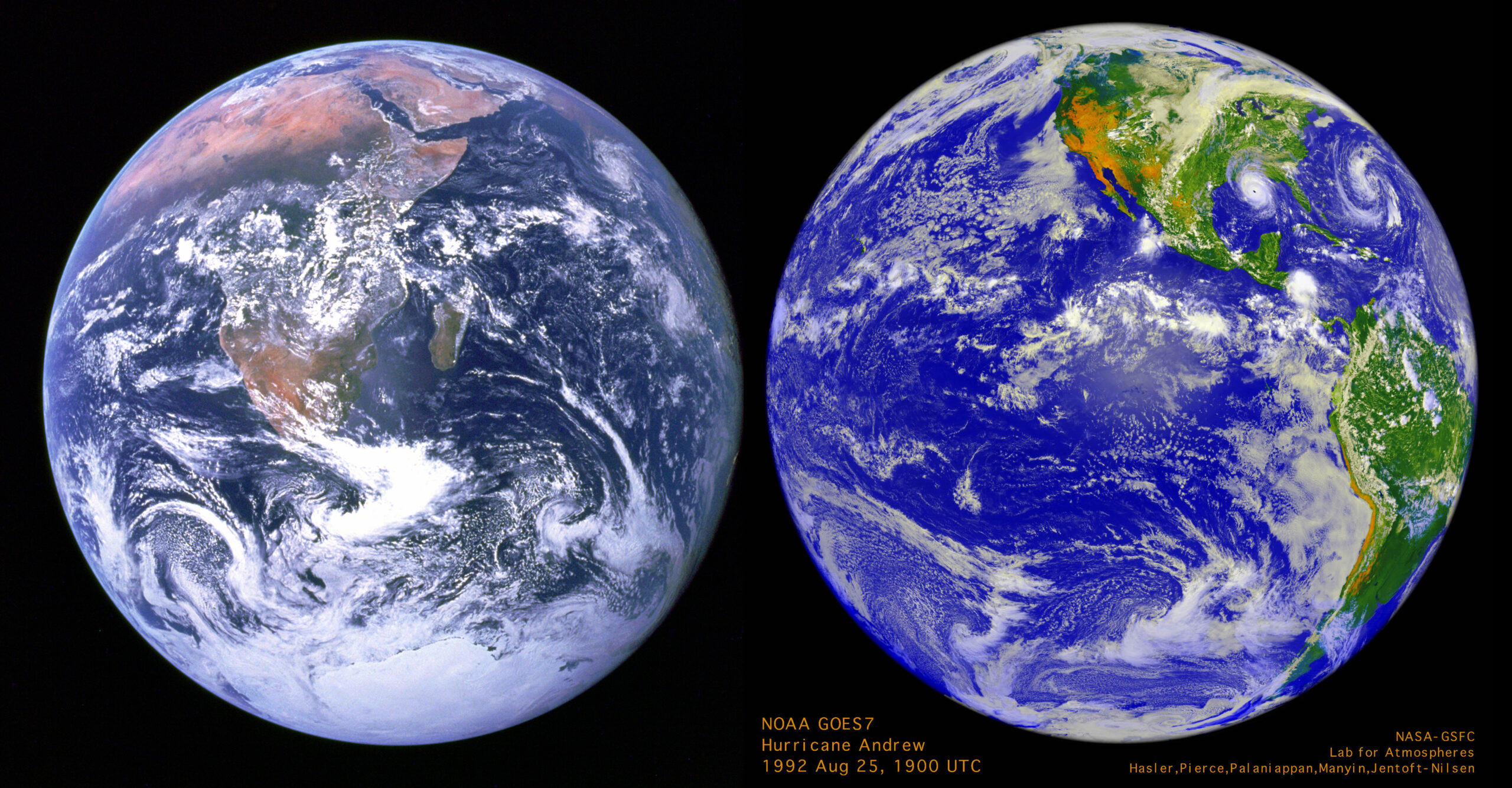
Background for Blue Marble photos: NASA Astronaut Jack Schmidt took the iconic Blue Marble Eastern Hemisphere image of the Earth at 10:39 UTC December 7, 1972, just 5 hours after the launch of the Apollo 17 moon rocket (See the left panel of Fig. 2). I joined the NASA Goddard Space Flight Center in 1974 and worked there as a Research Atmospheric Scientist for 30 years. For years we lamented that we didn’t have a beautiful Blue Marble image of the Western Hemisphere. In 1992 I took it upon myself to remedy that situation. Using Photoshop, I put together a full Earth image of the Western Hemisphere using GOES Weather Satellite images. With the help of my team, we colorized the infrared images assigning colors according to temperature. (See the right panel of Fig. 2). There was great demand for the image for advertising (e.g., Apple iBook), Earth Day celebrations, etc. Therefore, we continued to refine our Western Hemisphere Blue Marble, arriving on our final masterpiece in 2001 as shown at the top. It was made by Reto Stockli who I brought from Switzerland to work in my lab at Goddard in 1999. This image was used as the background image on the original iPhone in 2007 and has been used on billions of iPhones, iPads, etc. since. It has been the iconic image of the Earth for those of us living in the Western Hemisphere ever since.
Referral Program
Tesla has reactivated its referral program. If you find any of my articles helpful to you, please use my referral link: https://ts.la/arthur73734 (Be sure to use it when you make your order. If you are buying a new Tesla and use my link, you’ll receive $1000 off your purchase price for Model S and X, you will get $500 off for Model 3 and Y). You will also get 3 months of Full Self Driving. It is technically FSD Beta and it will drive you automatically to any address you enter into the Navigation.
Chip in a few dollars a month to help support independent cleantech coverage that helps to accelerate the cleantech revolution!
Have a tip for CleanTechnica? Want to advertise? Want to suggest a guest for our CleanTech Talk podcast? Contact us here.
Sign up for our daily newsletter for 15 new cleantech stories a day. Or sign up for our weekly one if daily is too frequent.
CleanTechnica uses affiliate links. See our policy here.
CleanTechnica’s Comment Policy




